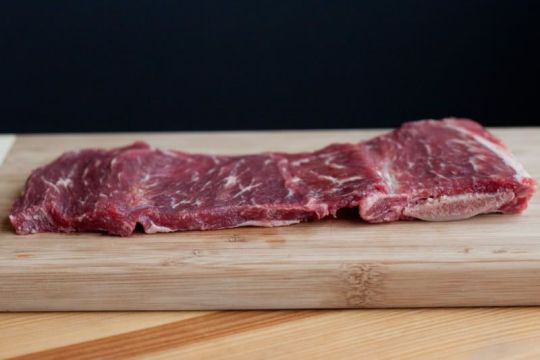While browsing Tumblr today, I stumbled upon a post made by someone with the nick memecucker. The post said:
That has led me to a rabbit hole full of Chinese-American, Korean BBQ, kosher and Irish food. Chinese-American food is a great example of this and this article provides a good intro to the history.
Italian-American Food
Many immigrants who came from Italy were from the south, ergo the poor part of Italy, and were used to a mainly vegetable-centric diet. This meant that when they reached the US, for the first time ever, they could afford to buy stuff that Northern Italians were used to, such as sugar, coffee, wine, and meat. This is why Americans of Italian origin were the first to combine meatballs with pasta, and why a lot of Italian-American food is sugary and (or) fattening. It is a celebration of their newly found access to food they were unable to buy back in Italy.
Corned Beef and Cabbage: When the Irish Meet the Jews
To quote this article:
The Irish immigrants almost solely bought their meat from kosher butchers. And what we think of today as Irish corned beef is actually Jewish corned beef thrown into a pot with cabbage and potatoes. The Jewish population in New York City at the time were relatively new immigrants from Eastern and Central Europe. The corned beef they made was from brisket, a kosher cut of meat from the front of the cow. Since brisket is a tougher cut, the salting and cooking processes transformed the meat into the extremely tender, flavorful corned beef we know of today.
The Irish may have been drawn to settling near Jewish neighbourhoods and shopping at Jewish butchers because their cultures had many parallels. Both groups were scattered across the globe to escape oppression, had a sacred lost homeland, were discriminated against in the US, and had a love for the arts. There was an understanding between the two groups, which was a comfort to the newly arriving immigrants. This relationship can be seen in Irish, Irish-American and Jewish-American folklore. It is not a coincidence that James Joyce made the main character of his masterpiece Ulysses, Leopold Bloom, a man born to Jewish and Irish parents.
Korean BBQ
The type of meat cut below is called a "flanken cut". It is actually unheard of in traditional Korean cooking.
The "Korean" version of meat cut is galbi, where the bone is cut about two inches long, separated into individual bones, and the meat is butterflied into a long, thin ribbon.
In fact, the style of galbi with the bones cut short across the length is called “LA Galbi,” as in “Los Angeles-style.” So the “traditional Korean barbecue” is actually a Korean-American dish. Now, here’s where things get interesting. You see, flanken-cut ribs aren’t actually all that popular in American cooking either. Where they are often used, however, is in Mexican cooking, for tablitas.
So you have to imagine these Korean-American immigrants in 1970s Los Angeles getting a hankering for their traditional barbecue. Perhaps they end up going to a corner butcher shop to buy short ribs. Perhaps that butcher shop is owned by a Mexican family. Perhaps they end up buying flanken-cut short ribs for tablitas because that’s what’s available. Perhaps they get slightly weirded out by the way the bones are cut so short, but give it a chance anyway. “Holy crap this is delicious, and you can use the bones as a little handle too, so now galbi is finger food!” Soon, they actually come to prefer the flanken cut over the traditional cut: it’s easier to cook, easier to serve, and delicious, to boot!
Time goes on, Asian fusion becomes popular, and suddenly the flanken cut short rib becomes better known as “Korean BBQ,” when it actually originated as a Korean-Mexican fusion dish!
Fish and Chips
In either London or the North of England, Jewish immigrant fried fish vendors "teamed up" with the cook potato sellers from Ireland to produce a meal that everyone associates with the UK nowadays.




No comments:
Post a Comment